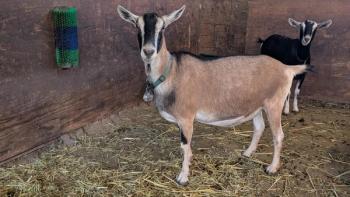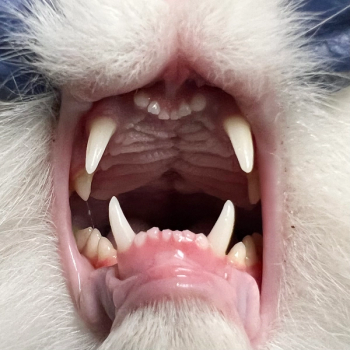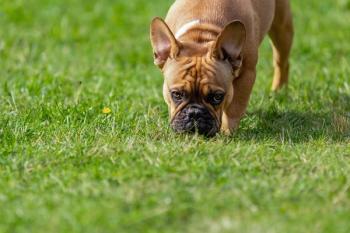
- Vetted January 2019
- Volume 114
- Issue 1
Veterinary dentistry wins: The perfect surgical flap
Its hard, but rewarding for you and your dentistry patient. Here are the main points to keep in mind when searching for success with a surgical flap after a tooth extraction.
In a recent session at
The first thing to consider when considering a surgical flap is knowing how difficult it can be. “Everybody has troubles with this,” Dr. Greenfield says, “and I don't blame them. We have a lot of flap failure in my specialty practice, and I remember when I was starting dentistry and learning how to do incisions before residency, I had troubles too. So I understand.”
Failure and success aside, though, an animal won't die from a poor flap or lack of a flap. So why do it? In short, to try to control the healing process a bit more. “We flap extractions because if we leave something open, we can't control the narrative with an animal like we can with humans,” Dr. Greenfield explains. “They eat food, they eat dirt, they eat rocks, they eat everything.”
Your perfect flap went horribly wrong? Check for tumors.
Dr. Greenfield poses the question to attendees: What if you made the perfect flap? “It's tension free, and everything looks like a million bucks. And then it breaks down.”
His answer? “You'd better start thinking about tumors. A tumor can make a beautiful surgery go bad quickly. Know that it can be something aggressive that's causing it too.”
To further explain, Dr. Greenfield says that a well-done flap will allow the tissue to heal, prevent bone from being further destroyed and prevent localized osteomyelitis from occurring. “When we do a flap,” he says, “it's to cover the defect that we have, and to ensure that the animal's going to get back to its normal activity as a pet as soon as possible.”
Not to mention what could happen if a flap isn't done properly-or at all. The slides he showed attendees of complications with oral nasal fissures and failed flaps were a horror show of necrosis and infection-enough to set your own teeth on edge. “If any of us had this happen to us?” he asks. “Oh, hell, we'd be begging for somebody to put a bullet to our head because it hurts so much. These poor pets are suffering. A proper flap will help prevent this.”
But what goes into a successful flap? A few things, of course. But before any of it can be explained, Dr. Greenfield stresses the importance of having the right surgical equipment-and properly taking care of said equipment.
Most importantly, he says you should be using sharp equipment. “In the boy scouts,” he says, “you learn a dull knife is a dangerous knife. The same can be said with your periodontal equipment. If you've got dull stuff, you're going to macerate tissue. You don't want your barber fixing you up with a dull razor-you'll be looking brutalized. A sharp piece of instrumentation is essential. Ship it out to get sharpened or buy new stuff.”
Another important factor with your equipment? Small and delicate wins the race. From little scissors to little needle drivers, Dr. Greenfield stresses that everything should be small. As he perfectly explained to attendees: “When you show up for surgery, don't show up with a shotgun to do delicate work.”
Once you've got a grip on proper instrumentation, Dr. Greenfield has three goals for veterinary professionals to meet when they're looking for that perfect surgical flap. Here's a quick breakdown of each factor.
First and foremost, Dr. Greenfield says that flap needs to be tension-free. “Zero tension,” he tells attendees. “Z-E-R-O. Zero tension. Because if you have any tension on that flap, it will fail. I promise you that it will fail.“
Second, Dr. Greenfield wants to make sure you've got plenty of space to work properly. “You need to have adequate exposure of the surgical site. Your base and your incision need to be wide enough to bring that ‘window shade' down to close over that defect.”
Finally, your flap should be pulled down properly, covering all of your bases. “A very important factor is that your edges should be over bone and not over where the alveolus was, because that has a tendency to not heal as well,” Dr. Greenfield told attendees.
Another important piece of information to keep in mind is the importance of saving the teeth, especially in dogs. Because what, Dr. Greenfield asked attendees, are canines to a dog? Hands. “It's their hands,” he says. “Before you reach for that scalpel blade to take out a broken tooth-if there's a dentist close by or someone who's very capable of doing a good job of saving those teeth-If there's any way to get those teeth saved, do it because it saves their hands.”
Articles in this issue
almost 7 years ago
Counter cost concerns with heartworm treatmentalmost 7 years ago
An OTC way to keep pets calm and carry onalmost 7 years ago
3 New Years resolutions for practice managersalmost 7 years ago
Cytology sample results in 47 minutes? Yep.almost 7 years ago
Feline behavior modifications that actually workalmost 7 years ago
Going above and beyond NSAIDs to banish pain and inflammationalmost 7 years ago
Can I use coconut oil as Fifis fat source?Newsletter
From exam room tips to practice management insights, get trusted veterinary news delivered straight to your inbox—subscribe to dvm360.






